Two parallel rays of light A and B as shown in the figure pass through two boxes. The possible combination of devices used in boxes I and II are
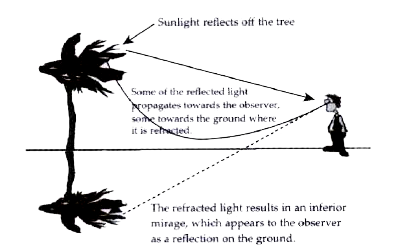
Convex lens and concave lens
Concave mirror and convex mirror
Concave lens and concave mirror
Concave lens and convex lens
The correct Answer is:D
Concave lens diverge light rays and convex lens converge light rays.
Topper's Solved these Questions
- BOOK - MTG IIT JEE FOUNDATIONCHAPTER - LIGHT EXERCISE - Exercise (Integer/Numerical Value Type)4videos
LIGHT
- BOOK - MTG IIT JEE FOUNDATIONCHAPTER - FRICTION EXERCISE - OLYMPIAD/HOTS CORNER15videos
FRICTION
- BOOK - MTG IIT JEE FOUNDATIONCHAPTER - MAGNETIC EFFECTS OF ELECTRIC CURRENTEXERCISE - EXERCISE (INTEGER / NUMERICAL VALUE TYPE)3videos
MAGNETIC EFFECTS OF ELECTRIC CURRENT
Similar Questions
A ray of light passes through a right angled prism as shown in the figure. State the angle of incidence at the faces AC and BC.
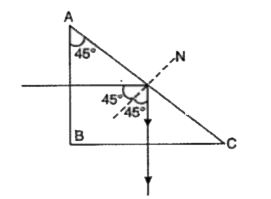 View Solution
View SolutionThe V-I graph for a series combination and for a parallel combination of two resistor is shown in the figure below. Which of the two A or B, represents the parallel combination? Give a reason for your answer.
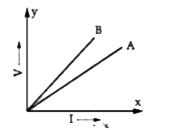 View Solution
View Solution
Knowledge Check
- Question 1 - Select One
A ray of light passes through a prism as shown in the figure.
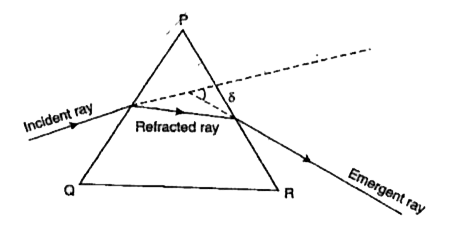
The angle δ is known asAangle of deviationBangle of dispersionCangle of emergenceDangle of refraction - Question 2 - Select One
A ray of light coming parallel to the principal axis after passing through a convex lens, passes through its
Aoptical centreBfocusCcentre of curvatureDnone of these - Question 3 - Select One
A parallel beam of light, when incident on an optical device shows behaviour as shown in figure. The device is
 Aconvex lensBconcave lensCconcave mirrorDplane glass slab of high refractive index
Aconvex lensBconcave lensCconcave mirrorDplane glass slab of high refractive index
The V-I graph for a series combination and for a parallel combination of two resistor is shown in the figure below. Which of the two A or B, represents the parallel combination? Give a reason for your answer.
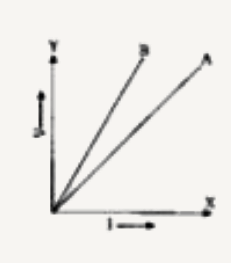 View Solution
View SolutionTwo plane mirrors AB and CD each of length 2 m are arranged parallel to each other √3 m apart and a ray of light is incident at 'A' as shown in the figure. How many reflections does the ray of light undergo? What is the distance travelled by the ray of light between the two mirrors? What is the angle of deviation?
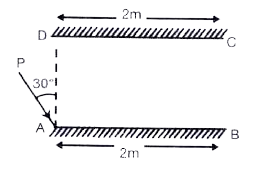 View Solution
View SolutionThere are two cuboidal boxes as shown in the adjoining figure. Which box requires the lesser amount of material to make?
View SolutionThere are two cuboidal boxes as shown in the adjoining figure. Which box requires the lesser amount of material to make ?
 View Solution
View SolutionThe V-I graph for a series combination and for a parallel combination of two resistors is 1 shown in Fig. Which of the V two, A or B, represents the parallel combination ? Give a reason for your answer.
 View Solution
View Solution

